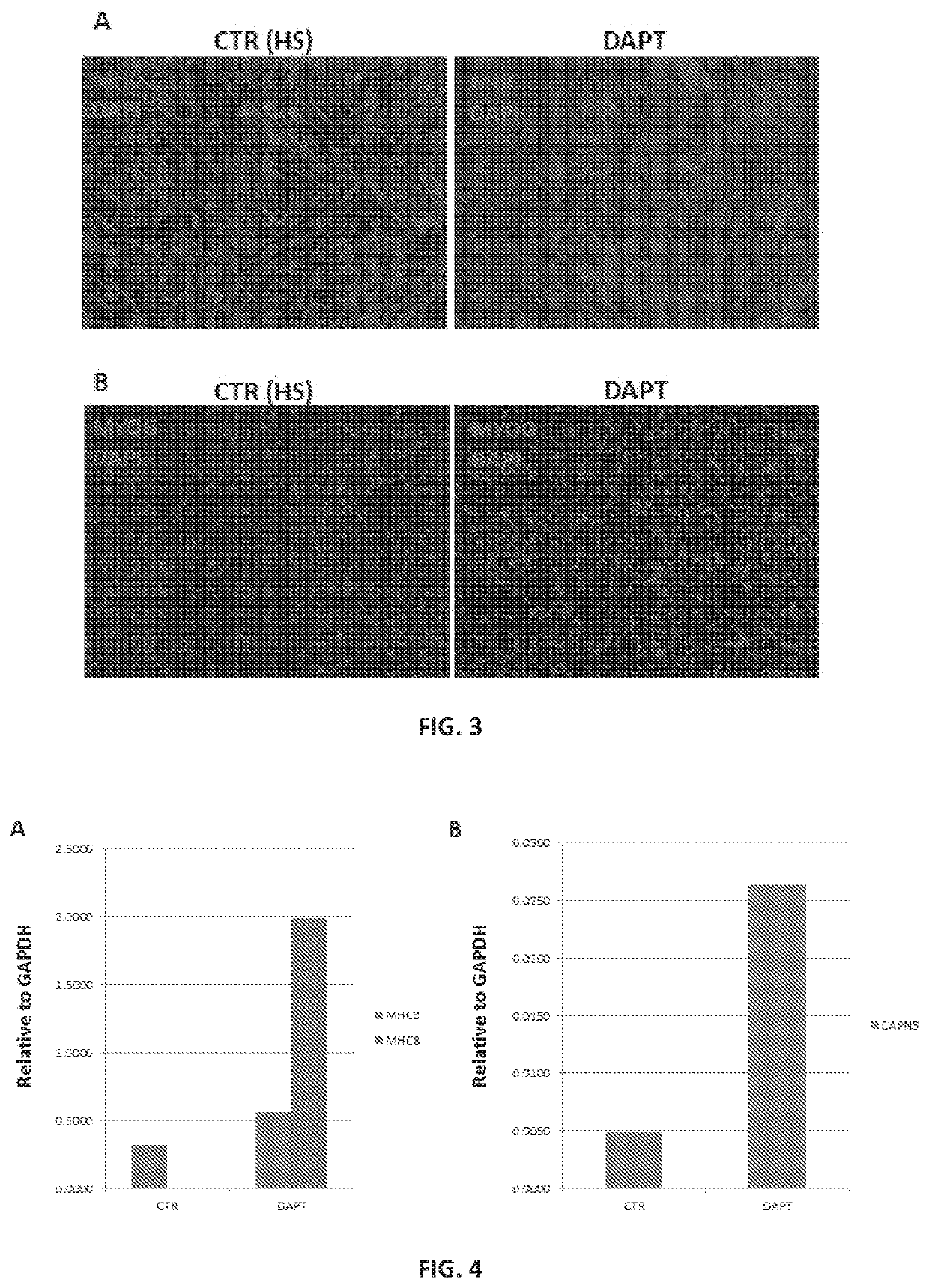Enhanced differentiation and maturation of pluripotent stem cell-derived myogenic cells
- Summary
- Abstract
- Description
- Claims
- Application Information
AI Technical Summary
Benefits of technology
Problems solved by technology
Method used
Image
Examples
example i
Introduction
[0060]A protocol for derivation of skeletal muscle progenitors from human pluripotent stem cells which give rise to myotubes both in vitro and in vivo has been developed. In vitro-generated myotubes remain immature, resembling the embryonic state. Described herein are chemical compounds that through inhibition of the gamma secretase protein, are able to improve the efficiency of differentiation and maturation of myotubes generated from iPS-derived skeletal muscle progenitors.
Materials and Methods
Cell Culture and Differentiation Procedure
[0061]Human induced Pluripotent Stem Cells (hiPSC, PLZ) or Embryonic Stem Cells (hESC, H9) were transduced with the lentiviral constructs pSAM2-PAX7-ires-GFP and pFUGW-rtTA to generate doxycycline-inducible PAX7 (iPAX7) PS-cells as previously reported (Darabi, 2012), iPAX7-PS cells were cultured on matrigel-coated flasks using mTeSR1 medium (Stem Cell Technology). Cells were differentiated to myogenic progenitors as previously described (...
example ii
Introduction / Results / Discussion
[0069]Primary skeletal myoblasts stand as the current gold standard for in vitro modeling of skeletal muscle diseases. However, isolation of patient-specific myoblasts requires a muscle biopsy, which is an invasive and uncomfortable procedure for patients. Patient-specific pluripotent stem cell skeletal muscle derivatives represent an attractive potential alternative for in vitro disease modeling without the requirement of muscle biopsy. The technology of reprogramming somatic cells into induced pluripotent stem (iPS) cells offers tremendous potential for the generation of large amounts of lineage-committed cells for disease modeling, as well as other applications, including drug screening. Nevertheless, variations on the myogenic differentiation efficiency among cell lines, as well as the overall embryonic nature of iPS cell-derivatives (across lineages) stands as a barrier for reliable disease modeling studies. In order to address these issues, the E...
PUM
 Login to View More
Login to View More Abstract
Description
Claims
Application Information
 Login to View More
Login to View More - R&D
- Intellectual Property
- Life Sciences
- Materials
- Tech Scout
- Unparalleled Data Quality
- Higher Quality Content
- 60% Fewer Hallucinations
Browse by: Latest US Patents, China's latest patents, Technical Efficacy Thesaurus, Application Domain, Technology Topic, Popular Technical Reports.
© 2025 PatSnap. All rights reserved.Legal|Privacy policy|Modern Slavery Act Transparency Statement|Sitemap|About US| Contact US: help@patsnap.com



